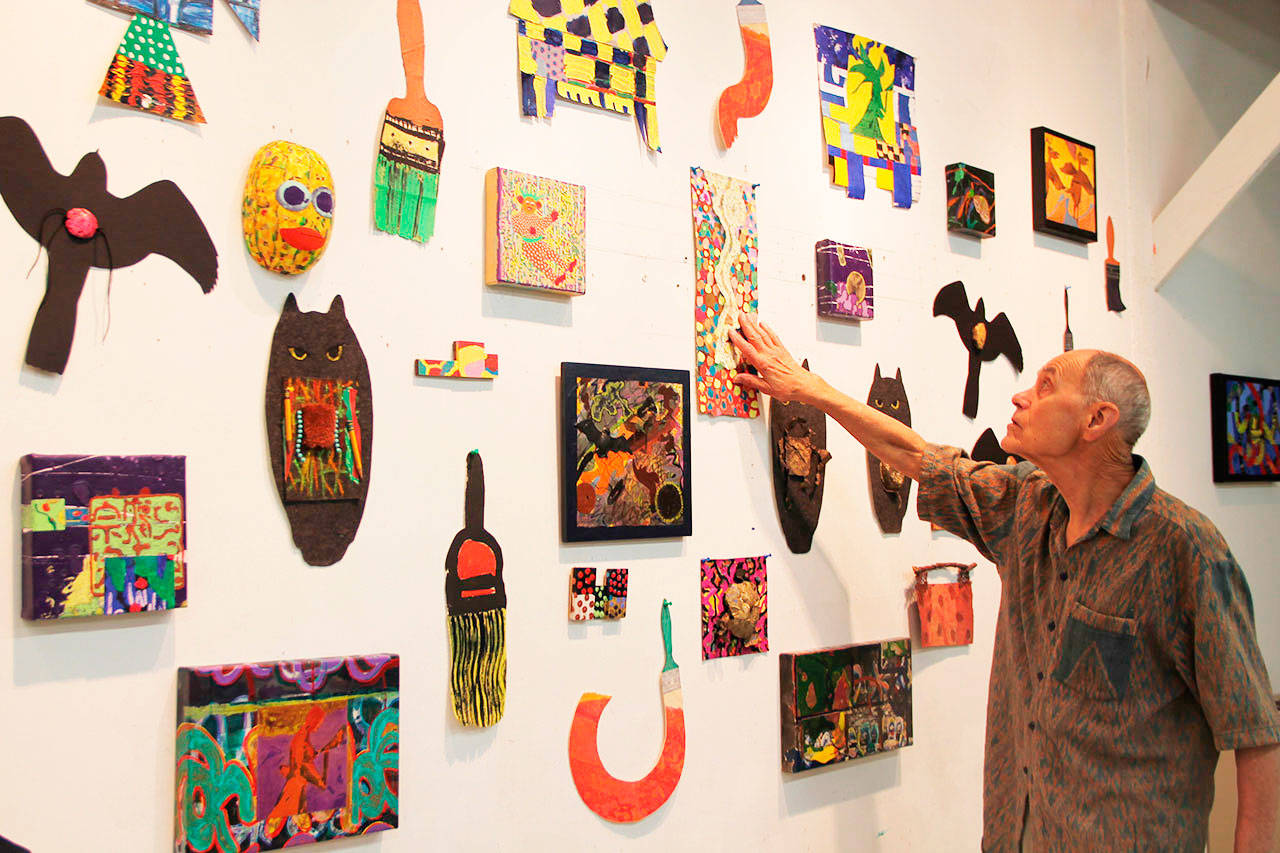A collection of linked short stories is a literary genre in which each story can stand alone, but taken together they create a larger whole. Nationally recognized island artist Don Cole’s latest show, which opens Friday at VALISE Gallery, is a collection of visual short stories that tell the vibrant tale of a life dedicated to painting personal, political and spiritual responses to the world.
Deeply influenced by cultural images he has seen traveling and spending time in more than 30 countries, Cole began his career in New York City during the 1960s, painting as an abstract expressionist in an era of minimalist and pop artists.
Innovative and always curious, Cole deepened his expression through his courage to play with new forms. In a note to friend and poet John Levy, Cole wrote: “I am not painting motivated by formal concerns or materials and techniques, though those things come into play in the execution. Nor do I wish to create a recognizable and repeatable style. I am open to and motivated by experiential circumstances that call for expression.”
In his large studio on the island’s west side, Cole’s short stories span the length of a wall in an expressive wave of color and shape, whimsy and symbolism. The artist recently inventoried his work, culling paintings, but “as a depression baby, I didn’t throw anything away.” Instead, he cut up the old paintings, reconfiguring and rewriting his visual fiction into new stories that articulate a short narrative.
“The green man is from Rajasthan,” Cole explained, pointing to a small rectangular painting. “The imagery comes from a folk process where a guy goes around telling stories from (images on) a story cloth.”
And the brown figures?
“They have a different story,” he said. “I started painting with rollers with different patterns. I thought the images looked like figures. I call them cloud figures because when you look at clouds, you see things.”
There are cutouts of owls and hawks Cole once made to deter nesting robins from fighting their reflections in the windows of the house he shares with his wife, mixed media artist Joan Wortis. The painted yellow masks are shells of spaghetti squash from his garden, which he stopped tending to three years ago at age 83. As for the chicken bone on a bed of fabric?
“That comes from my SoHo era,” Cole said. “The background is leather from a big dumpster in SoHo. There were a number of artists (Dumpster) diving like me.”
The self-proclaimed country boy who grew up in Manhattan moved to SoHo in 1965 after graduate school, as part of the avant-garde artists who “colonized” the area — “when beer was 10 cents a glass at Fanelli’s Bar” — long before it became today’s arty upscale neighborhood.
Always working at the forefront of ideas, Cole and some fellow artists opened a co-op gallery called “55 Mercer Street” to show their expressive work when established galleries only represented minimalist and pop artists. When SoHo began to gentrify, he started a food co-op and bought food directly from sources in the Bronx. Once again ahead of the crowds, Cole eventually moved to Brooklyn, where he bought “a raw building,” a cavernous loft that he renovated while teaching at Parson’s School of Design in New York.
But the desire to push beyond the boundaries of art and culture sent Cole to Japan in 1992 to teach art. Already exposed to non-Western imagery when he was stationed in Korea in 1953, Cole and Wortis pulled up their New York stakes and, after teaching and travelling in Southeastern Asia, relocated to Vashon in 1994.
With gallery shows in New York and Seattle, National Endowment for the Arts awards, paintings held in private collections, museums and U.S. State Department embassies, Cole’s dossier is almost a short story in itself. But that’s not what’s foremost in the artist’s mind. According to Levy, Cole paints because it’s not like anything else, which is why he keeps “doing it, loving and learning from it.”
“I’m political and spiritual,” Cole said, “but my paintings also come from my loves. I love mountains and hiking, and I loved our trip to Vietnam. That’s where my ‘Mountain Vision’ show came from. Another came from India and the beautiful cursive of the Malayalam language.”
Pointing to the Hindu monkey deity Hanuman — an image found in many of his paintings — Cole said, “And I like him. I’ve adopted him as my guy.”
Which stands to reason, given Hanuman’s embodiment of loyalty, bravery and innovation.


